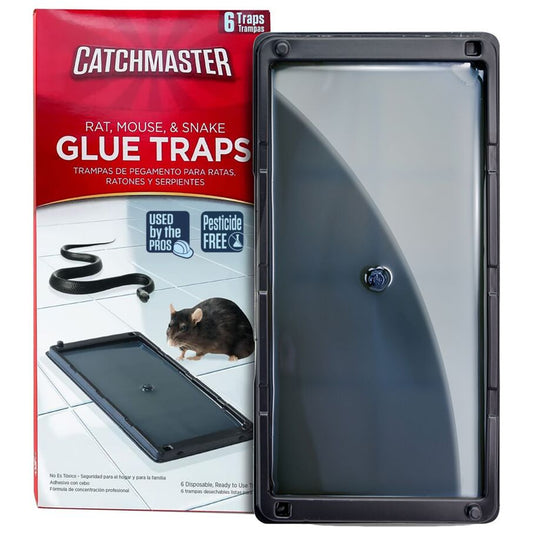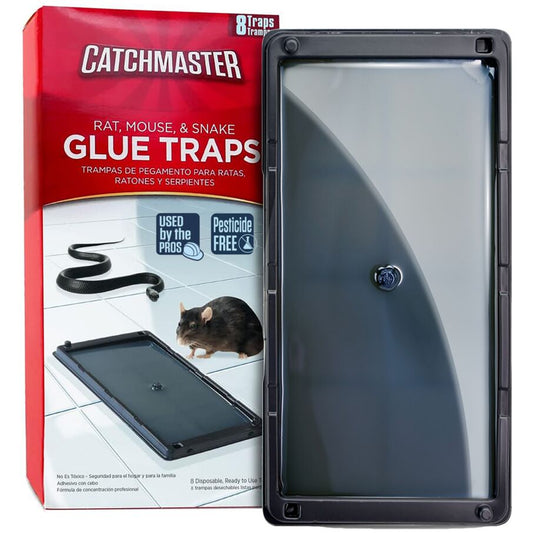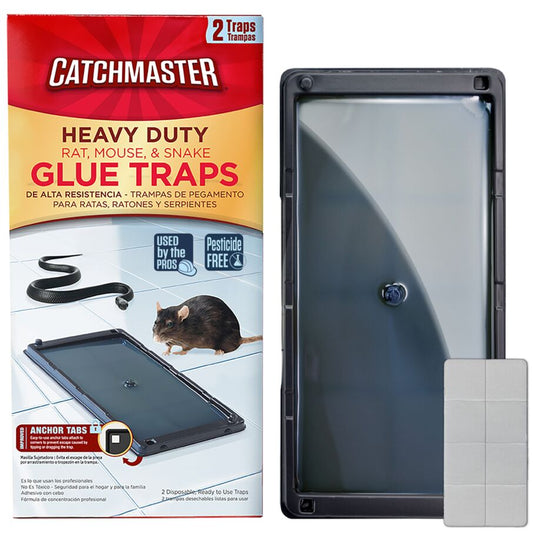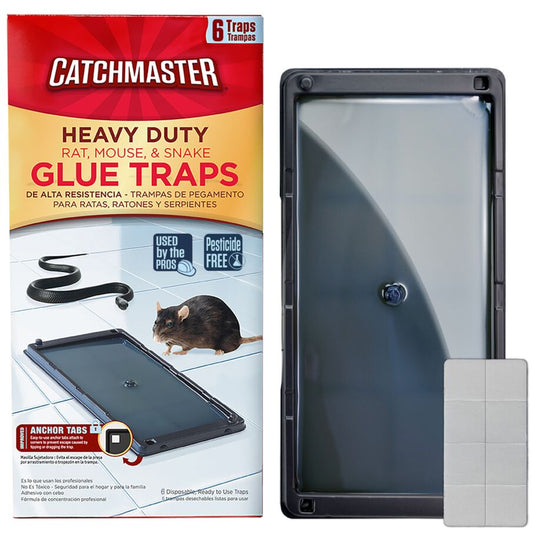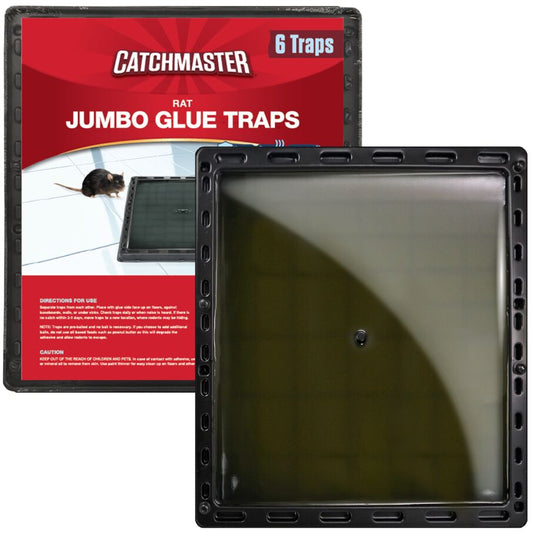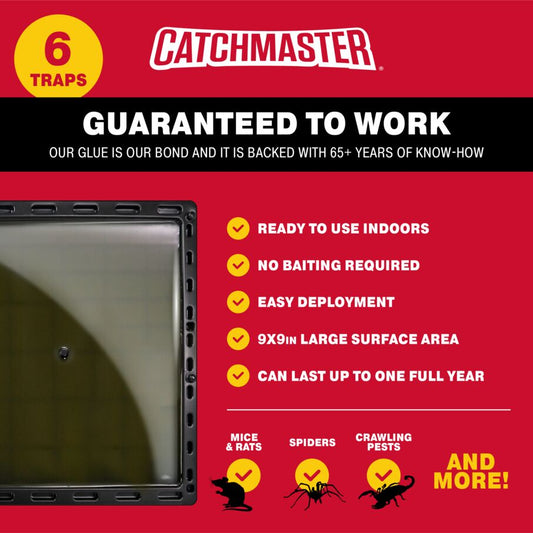Rat Traps
If rats have been wreaking havoc in your home or business, you need rat traps that work. Catchmaster® offers the industry’s top-rated rat traps to put an end to your rat problem!
-
Rat, Mouse & Insect Glue Traps
$15.99 – $25.99($2.67 - $2.17/trap)4.9 / 5.0
(18) 18 total reviews
Regular price From $15.99 USDRegular priceUnit price / per$15.99 USDSale price From $15.99 USDQuick Add
Select Size

Rat, Mouse & Insect Glue Traps
-
Heavy-Duty Rat, Mouse & Insect Glue Traps
$11.49 – $19.49($5.75 - $3.25/trap)5.0 / 5.0
(19) 19 total reviews
Regular price From $11.49 USDRegular priceUnit price / per$11.49 USDSale price From $11.49 USDQuick Add
Select Size

Heavy-Duty Rat, Mouse & Insect Glue Traps
-
Jumbo Glue Traps for Large Rodents and Other Pests
$40.99($6.83/trap)5.0 / 5.0
(4) 4 total reviews
Regular price $40.99 USDRegular priceUnit price / per$40.99 USDSale price $40.99 USD
Safe and Effective Rat Traps for Your Home
Catchmaster makes one of the only rat glue trap solutions that is non-toxic and pesticide-free. Neither contact nor consumption will result in harm to people or pets!
How Does a Sticky Trap for Rats Work?
Our sticky rat traps come with our patented pest-specific glue formulation, ensuring maximum rat-stopping power™. The thick adhesive layers ensure that once a rat steps on the trap, it’s stuck—no escape.
Our glue boards don’t just trap the rats. They also trap everything else that comes with them! Our traps have been proven to capture ticks, fleas, allergens, bacteria, and viruses, too.
Why Choose Catchmaster Traps for Rats?
For over 70 years, we’ve worked alongside pest control professionals to bring you professional-grade sticky rat traps known for their legendary stickiness. They love our relentless focus on quality and customer satisfaction–and you will, too!
Shop Rat Traps That Work
Get rid of your rat problem and reclaim your space! Shop our top-rated rat traps today and take control of your space. Our traps provide quick, reliable solutions that work every time and protect your property!
FAQs About Traps for Rats
Are rat sticky traps safe to use around children and pets?
Yes! Our rat sticky traps are non-toxic, pesticide-free, and safe to use around children and pets! If someone does happen to get caught in the trap, pour a little olive oil on it to get free!
How do I choose the right rat trap for my home?
Choosing between sticky rat traps and instant snap traps is a personal preference! Catchmaster offers a variety of mouse traps, including glue boards, glue traps, and traditional snap traps. Each type is designed to offer effective solutions for different environments and preferences. They work incredibly well to catch the rats that have been causing you stress.
Where should I place rat glue traps for the best results?
Our traps are designed to perform in the harsh, moist conditions where rats thrive, such as along walls, near food sources, or in hidden spaces. Rats tend to travel along edges, so positioning traps in these areas will give you the best results.
Can I use multiple types of rat traps at the same time?
Yes! Placing multiple rat traps in different locations will help maximize your catch. Consistent trapping using Catchmaster's powerful rat control products, combined with sealing entry points and removing food sources, is key for the fastest possible rat elimination.
How long do glue rat traps last?
Our heavy-duty rat traps are durable and long-lasting! In ideal conditions, the glue in our traps can last for up to a year when placed in indoor spaces. Monitor them frequently to check for dust or other debris, as it can affect the effectiveness of your trap.
What should I do if the rat trap doesn't seem to be working?
If the trap you choose doesn’t seem to be working, try another type of trap! You can also add additional traps to your space, move your traps to a different location, or replace them with a fresh trap.



